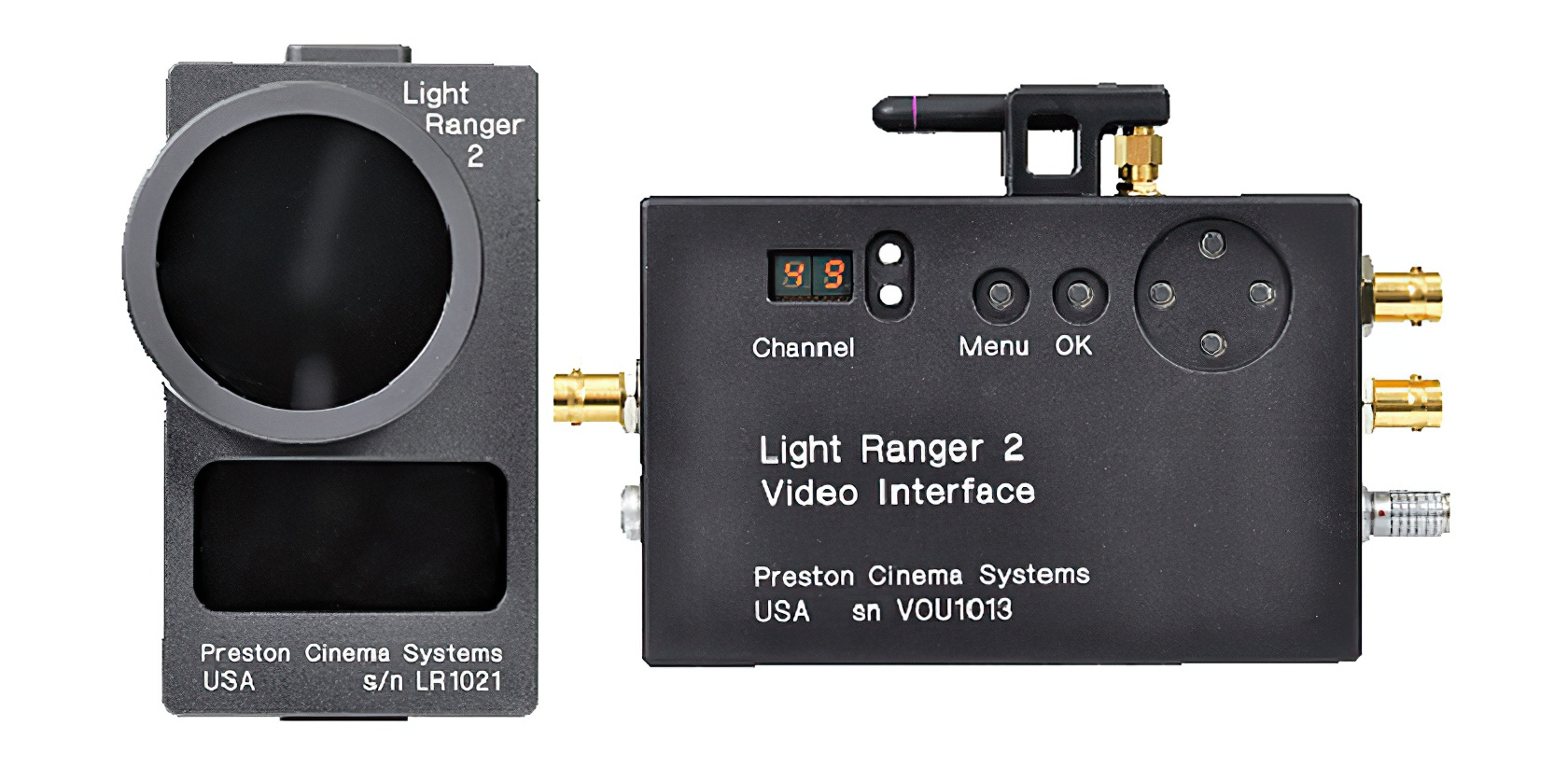
Preston Shares Academy Sci-Tech Honors for Light Ranger 2
“The best part of inventing is not necessarily the successful parts, but what you learn before you can take the next step forward.”
ASC associate member Howard Preston and his colleague Bernie Butler-Smith shared a Scientific and Engineering Award for the Preston Cinema Systems Light Ranger 2 at the 95th Annual Academy Scientific & Technical Awards this year.
The Light Ranger 2 provides precise, real-time, focus-distance information by continuously tracking subjects in 16 discrete zones. The distance and depth-of-field indicators are superimposed on the camera image, enabling the focus puller to intuitively judge focus, even in challenging situations.
Preston was recognized for the concept, design and engineering of the solution, while Butler-Smith was recognized for the design and implementation of electronic circuitry and software.
Preston was previously honored by the Academy with a 1985 Technical Achievement Award, for designing and developing the Micro Force, and a 2007 Scientific and Engineering Award (shared with Mirko Kovacevic), for the design and engineering of the Preston Cinema Systems FI+Z.
AC recently connected with Preston to discuss his latest honor.
American Cinematographer: What are some of the things you learned with the original Light Ranger that informed the design of Light Ranger 2?
Howard Preston: The best part of inventing is not necessarily the successful parts, but what you learn before you can take the next step forward. And in this case, we learned a lot. The first thing was that we shouldn’t be measuring in a very small area of a subject; the original Light Ranger measured in a circle about 2 inches in diameter, and the user had to use a pan-tilt head to move that circle whenever the subject moved. Also, this device was the size of a small camera, so it was on its own tripod; the user was looking through what appeared to be the viewfinder of a camera, putting a crosshair on the subject and trying to track the subject. We found out that in general, it was too time-consuming to set up and required special training for the operator. So although it was great for very special shots, like the way Conrad Hall [ASC] and [1st AC] Zoran Veselic used it in Without Limits for close-ups of the runners’ legs [see AC Sept. ’98], it was too specialized for widespread use.
We wanted Light Ranger 2 to measure multiple distances simultaneously over a wide area and be simple to operate and small enough to be mounted on the camera. But equally important is how the focus information is presented to the user; we needed to show the information in a way that the user could react to it without having to translate [focus] distances to knob position. What I came up with was this idea of combining graphics that show the relationship between the knob position and the lens’ depth of field. So the display has 16 vertical rectangles, one for each measurement zone, arranged around the horizontal axis of the screen. You can have multiple subjects in the frame and get a measurement for each of them, and when the director wants to pull focus from one actor to another, you immediately know where the focus has to be pulled.
You mentioned in your acceptance speech that 1st ACs Bob Smathers and Dan Ming were the first to use Light Ranger 2 on set. What was the most important feedback you got from them?
Preston: The device is primarily designed to work in manual-focus mode, but you also have the option to go into autofocus mode — for instance, if subjects are moving too quickly or too erratically and the depth of field is so shallow that you just can’t adjust it that precisely. But once you’re in autofocus mode, what if you want to go back to manual focus? The knob is set to one distance and the lens is on a completely different one, and you need to smoothly go from one to the other. To accommodate that, we originally had a small box in the upper left side of the display, and that box had its own little bar graph that showed the lens position vs. the Light Ranger setting. But it was hard to see, especially when there was a lot of action happening in the frame. Dan and Bob suggested eliminating the separate box and making the bars corresponding to the manual focus go into a background mode on the display — visible, but dimmed out when the user was in autofocus mode. It was a really smart idea, and that’s exactly what we did.
You also mentioned in your speech that Light Ranger 2 continues to evolve. What’s next?
Preston: Up till now, we’ve used a sparse set of data points to create the so-called focus curve — the user enters 10 points on the lens, and then the software can arrange a smooth curve [by interpolating the others]. We’re about to release an option where the user can enter every calibration point on the lens. That’ll be a step forward, because it will ensure all the engraved marks line up.
Light Ranger 2 has been out for almost a decade. Do you still get user feedback?
Preston: We get feedback literally every day. I think that’s great because it means people are finding it useful.
What are some of your sources for inspiration?
Preston: Information about science and technology is the first thing I look at in the morning — the physics web, Science Daily, what’s happening in photography. Sometimes something that’s available in developing technology strikes me as being particularly interesting; often it’s a human-to-machine interface. I’d say that’s the thread that has connected most of the work here.
Preston Cinema Systems recently introduced the Light Ranger 2-M and Light Ranger 2-W.






